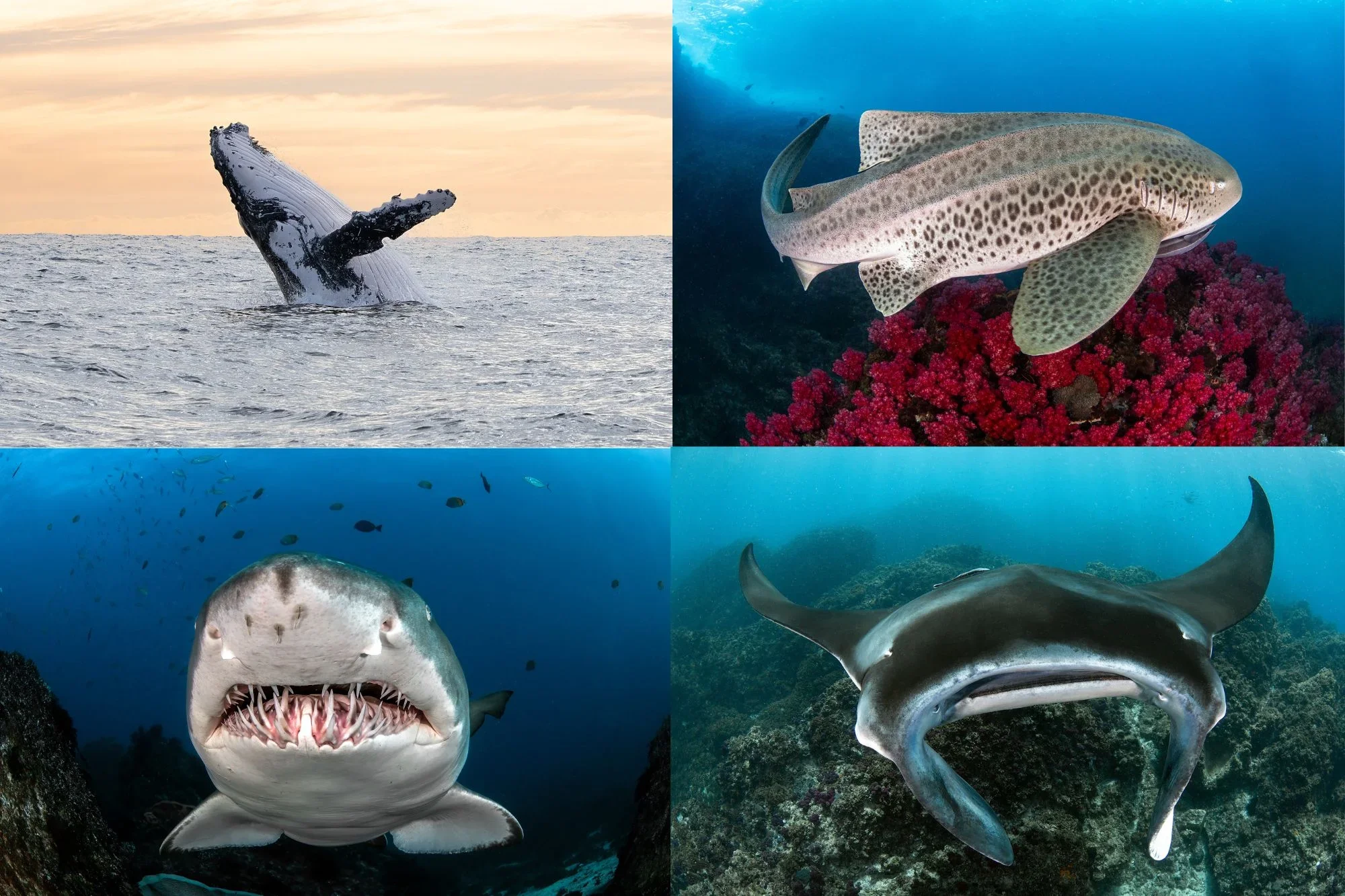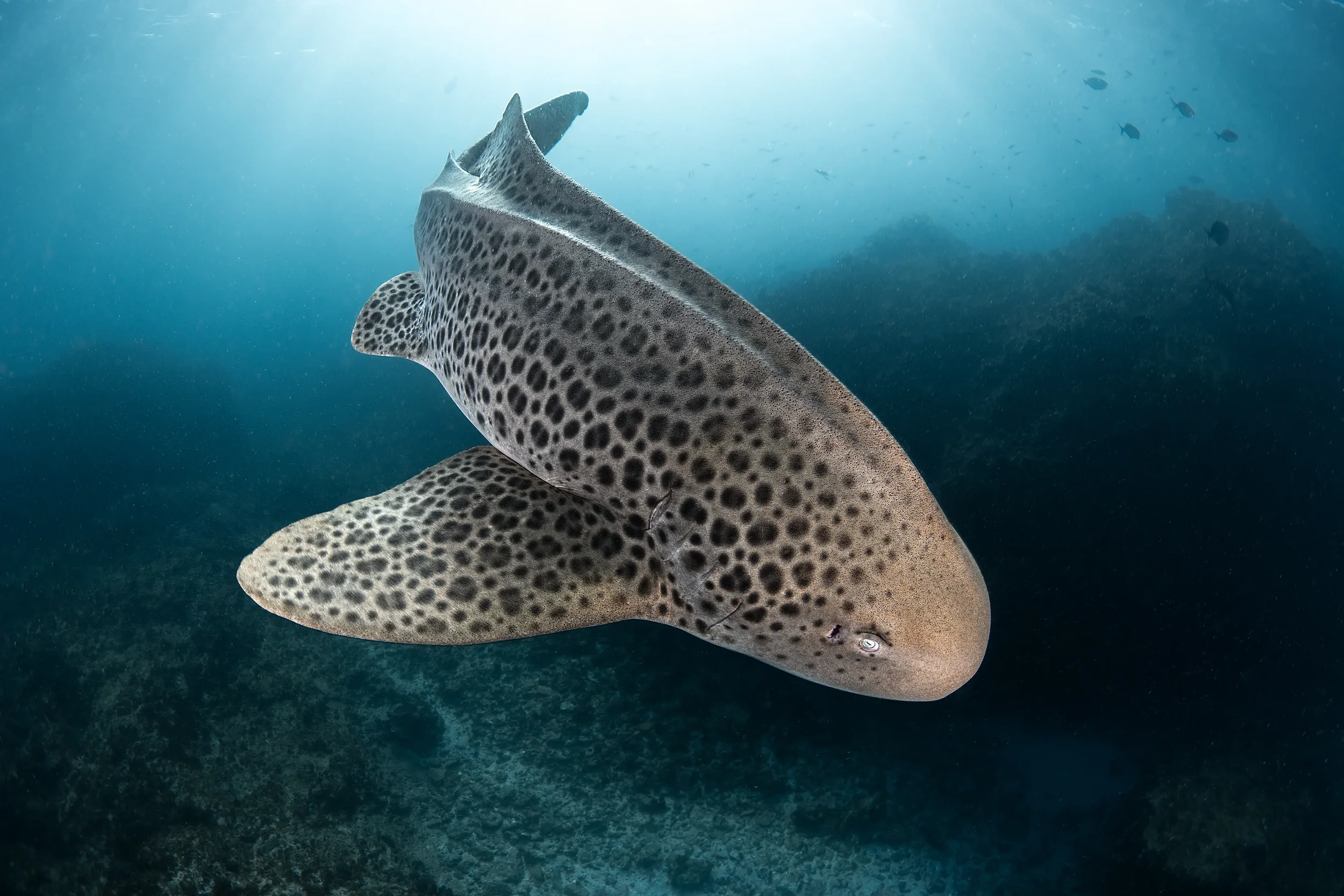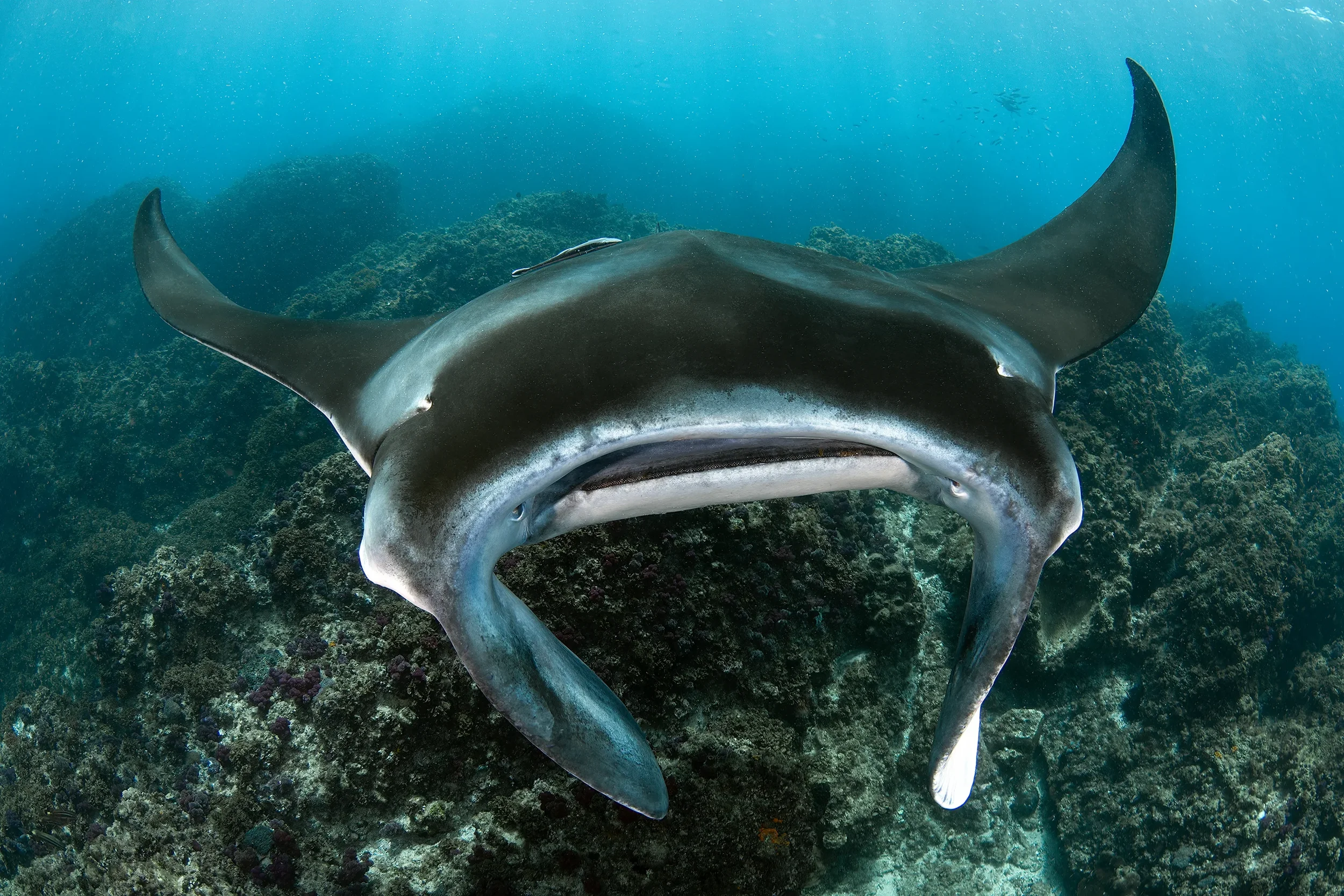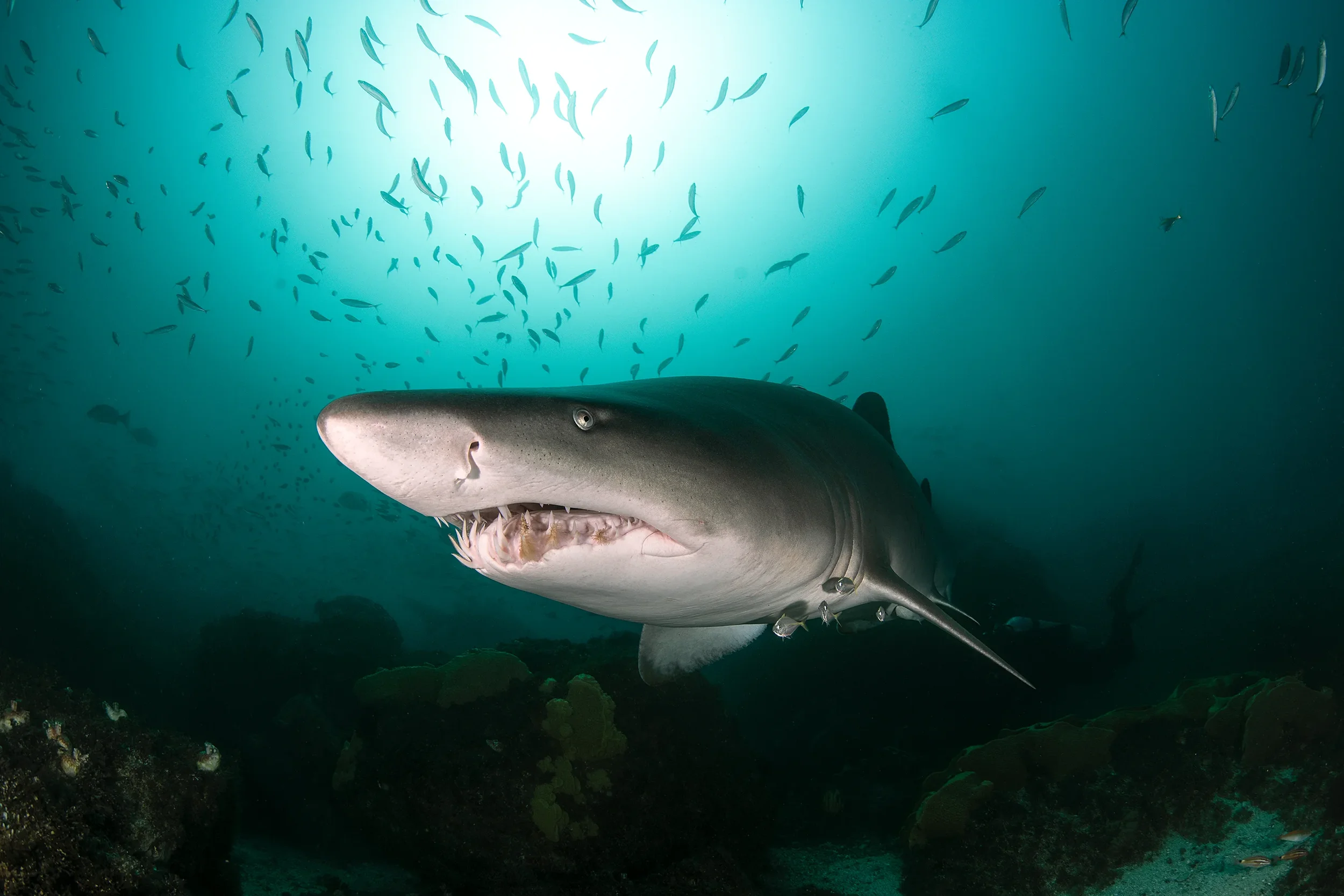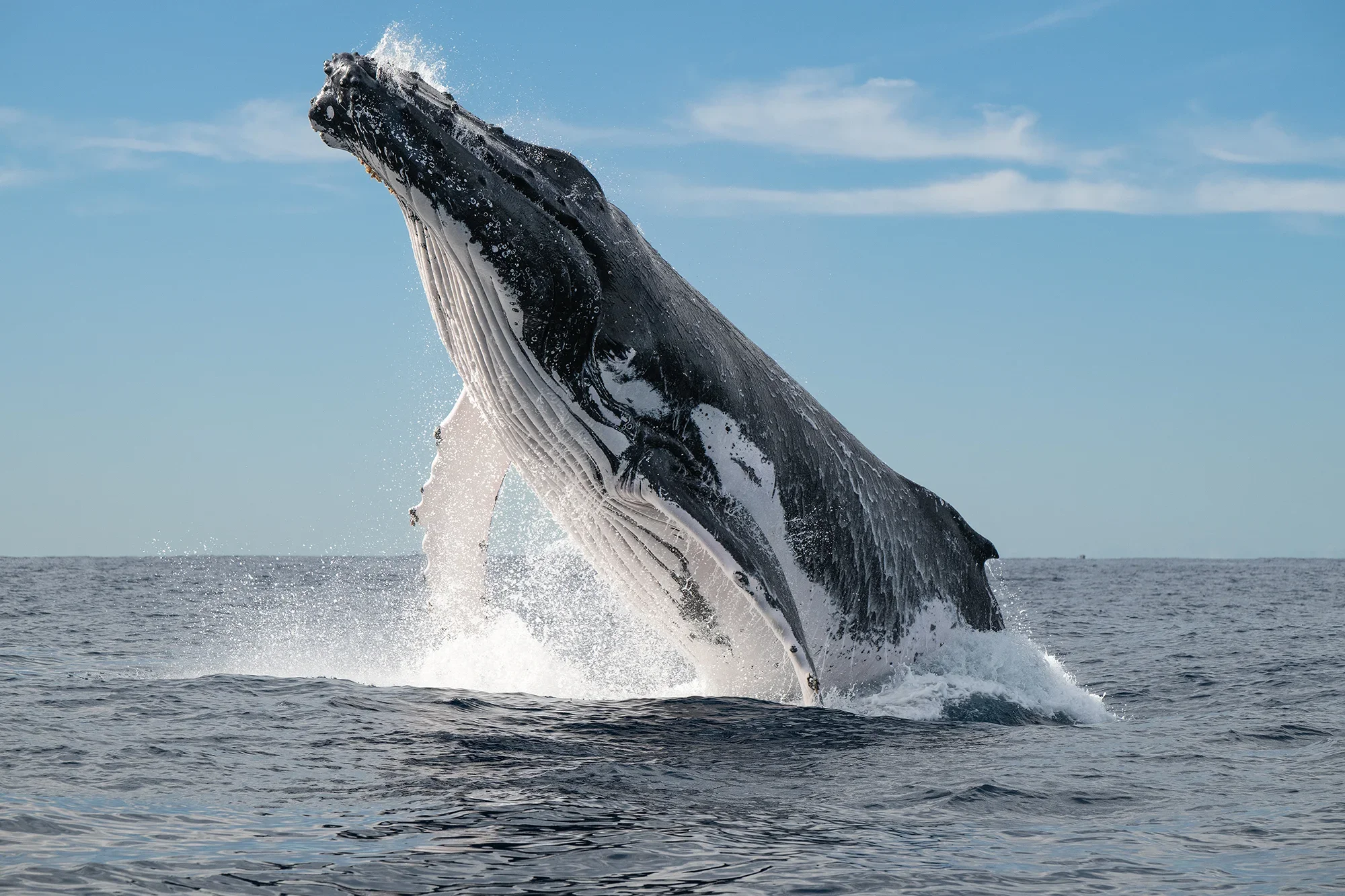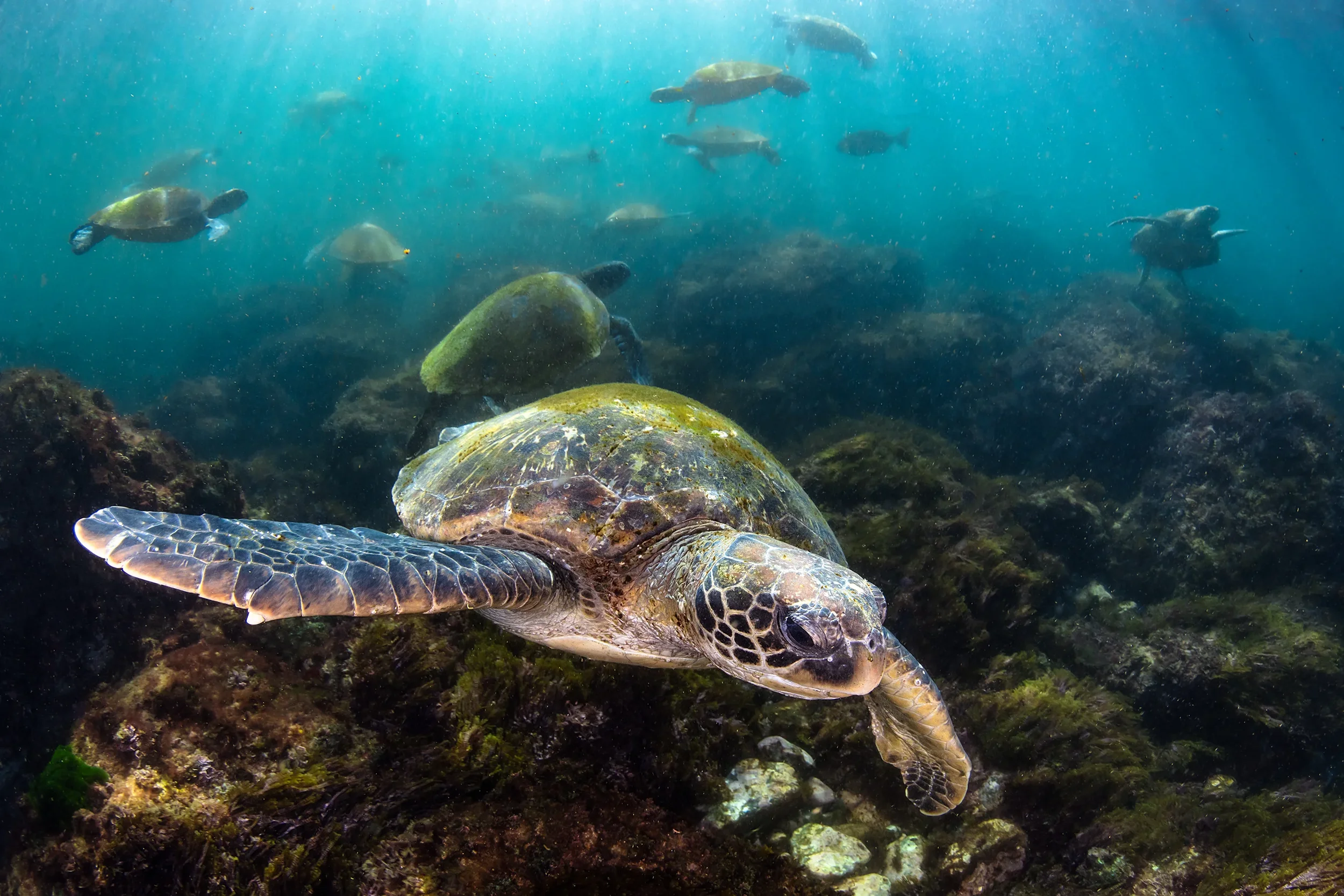Seasonal Marine Life to Spot Near the Gold Coast, Australia
The Gold Coast is well known for its beautiful beaches, pumping surf, and thriving tourism culture—but did you know it’s also a hotspot for sharks, whales, and other exciting marine species?
I’ve lived on the Gold Coast my entire life, and I’m a little embarrassed to admit that I didn’t realise just how many aquatic species can be seen while snorkelling or diving throughout the year. In this article, we take a look at the many seasonal species that visit the coastal waters within an hour’s drive from the Gold Coast.
Leopard Sharks (December to April)
Whether you call them leopard sharks or zebra sharks, we can all agree they’re a stunning species and make amazing dive buddies. This photogenic shark is seen in large numbers between December and April at several dive locations near the Gold Coast, including North Stradbroke Island, Palm Beach Reef, Cook Island, and Nguthungulli (Julian Rocks).
Your chances of seeing leopard sharks are high at all these sites, but Nguthungulli Julian Rocks is undoubtedly the best. During peak season (January to March), you might see upwards of 30 individuals swimming calmly through midwater around the rocks—truly a sight to behold!
Leopard sharks typically grow up to 2.5 meters and are a docile, harmless, slow-moving species, making them a perfect “beginner shark” for those new to diving or snorkelling with large marine animals. Mature individuals have a yellow-tan body covered with a distinctive spotted pattern and a long, flexible tail, making them a favourite among underwater photographers.
To reach Nguthungulli Julian Rocks, take a 50-minute drive south of the Gold Coast to Brunswick Heads or Byron Bay, where local operators run regular snorkel and scuba trips to see these beautiful animals up close.
Manta Rays (January to May)
The elegant manta ray is a favourite of just about every snorkeller, freediver, and scuba diver—and it’s not hard to see why! With the largest brain-to-body ratio of any fish species, manta rays can show a level of curiosity and connection that’s hard to describe.
To experience manta rays near the Gold Coast, plan your visit between January and May, with peak encounters typically between February and April. These rays can grow up to 3–3.5 meters from wingtip to wingtip and will often come very close to you—provided you remain calm and still.
Sometimes they pass by gracefully, while other times they hover at cleaning stations or filter feed on plankton. Each encounter is unique and almost always results in fantastic photo and video opportunities.
There are three manta ray hotspots near the Gold Coast worth checking out:
Cook Island (least reliable but can surprise you on a warm day)
Nguthungulli Julian Rocks (good but inconsistent)
Manta Bommie, North Stradbroke Island (by far the most reliable)
Manta Bommie is best experienced on scuba, allowing you to descend to 12–13 meters and observe these gentle giants as they glide overhead in groups of 6 to 8 individuals or more.
Grey Nurse Sharks (June to November)
Like leopard sharks, grey nurse sharks go by many names—some call them sand tigers, others refer to them as ragged-tooth sharks. Whatever you call them, one thing is clear: they have a badass smile and are an exciting species to dive with.
Grey nurse sharks can be seen at several Gold Coast dive sites during the cooler months (June to November), with peak numbers around August and September. Top dive spots include Shark Alley and Turtle Caves off North Stradbroke Island, or the deeper trenches at Nguthungulli Julian Rocks.
These sharks typically hang out in deeper water (15–20 meters), so scuba diving is the best way to get close. Though they may look intimidating with their sharp, protruding teeth, grey nurse sharks are another docile species and completely harmless when left undisturbed.
During peak season, you’ll often see them congregating in rocky outcrops and trenches, slowly drifting with the current. For the best encounters, descend to the seafloor, slow your breathing to reduce bubbles, and use your peripheral vision to track their movement. Master this method, and you'll find yourself just inches away from incredible photo ops.
Humpback Whales (June to November)
One of the most popular seasonal visitors to the Gold Coast has to be one of the true giants of the sea—the humpback whale. Every year, these majestic animals migrate along Australia’s East Coast, passing just meters from the beach.
From June to November, you can often spot them breaching, tail slapping, and cruising by simply by looking out to sea. But for a truly unforgettable experience, consider booking a whale-watching tour—or even a whale swim.
Whale-watching tours offer the chance to see humpbacks displaying a variety of surface behaviours such as pec slapping, head lunging, and spy hopping. Whale swim tours, on the other hand, offer the once-in-a-lifetime opportunity to see these gentle giants underwater. It’s something you'll never forget.
Sea Turtles (Year-Round)
I debated whether to include sea turtles in this list because they can be seen in abundance all year round at the sites mentioned above. However, if you want to guarantee encounters with large numbers of turtles (more than 15–20 in one spot), book a snorkel or scuba trip to Cook Island.
Green turtles dominate the site, but hawksbill and loggerhead turtles are also frequently seen, often feeding among the rocks. It's a great location for beginner snorkellers or those looking for a laid-back, wildlife-rich experience.
Wildlife Calendar
Leopard sharks
Time of year: December to April
Best dive sites: Nguthungulli Julian Rocks, Manta Bommie - North Stradbroke Island, Cook Island
Manta rays
Time of year: January to May
Best dive sites: Manta Bommie - North Stradbroke Island, Nguthungulli Julian Rocks, Cook Island
Grey nurse sharks
Time of year: June to November
Best dive sites: Nguthungulli Julian Rocks, Shark Alley - North Stradbroke Island
Humpback whales
Time of year: June to November
Turtles
Time of year: Year round
Best dive sites: All dive sites are great! Cook Island is the best.
Final Thoughts
The Gold Coast truly is a marine life hotspot and an incredible place to base yourself for a dive-focused adventure. Visit during the warmer summer months to encounter manta rays and leopard sharks, or brave the cooler winter waters for a chance to see the iconic grey nurse shark and the majestic humpback whale.

